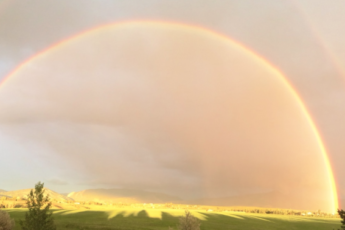
Ag Census and U.S. Census population estimates released this month
April is tax season; it’s also census season. And this year, the federal government released two big censuses. Or is it censi? Either way, earlier this month the U.S. Census Bureau put out its state and county population estimates for 2018. The U.S. Department of Agriculture also released the results of the most recent Census of Agriculture — of particular interest to us.
We at Prairie Populist know that census data isn’t all that exciting for most folks. We’re impressed that you even opened this article and made it to the second paragraph. And if you keep going, we promise to reward you at the end with an adorable farm animal video. Will it feature kittens? A dog? Baby goats? You’ll have to keep reading to find out.
Before we share some of our key takeaways, let’s take a second to talk about what these censuses are and why they matter.
Every 10 years, the federal government attempts to count every person living in the country. We each filled out a census form in 2010, and we’ll do it again in 2020. Filling out the census is more than just a civic responsibility; it’s the law, as stated right there in the U.S. Constitution.
During the in-between years, the folks at the U.S. Census Bureau don’t just sit on their hands. They meticulously gather information on births, deaths and migration patterns. The purpose is to eventually release to the public population estimates for states and counties every year.
The information from the census can have huge impacts on our communities. The government uses the data to reassign congressional seats and to dole out billions of federal dollars to support housing, education, transportation and health care.
The USDA, on the other hand, commissions the Ag Census every five years. Law requires that each person responds to the census questions presented to them. The survey gathers information on land ownership, production practices, expenses, as well as the number of farms, ranches and producers. Private businesses, local governments, the USDA and Congress all use this data to inform their decisions about what programs, facilities and services they’ll provide.
“We have to have data like this to help us improve American agriculture,” said Secretary of Agriculture Sonny Perdue about the Ag Census. “The initial snapshot review shows that American farmers are adapting and innovating. It also shows that they are involved in sound conservation practices.”
The census results show us what we Montanans already recognize: our state is not stagnant. For better or for worse, our towns change as people come and go. Weather patterns shift, commodity prices fluctuate and farmers vary what they grow. We see these shifts on the ground. By sharing our stories and filling out the census, the folks we elect can understand these changes, too.
Here are Prairie Populist’s top 15 takeaways from the U.S. Census Bureau’s 2018 population estimates and the USDA’s 2017 Ag Census. And don’t forget, there’s an adorably funny animal video waiting for you at the end.
And, as promised, here is your adorable animal video to entertain you. You’ve earned this.
-Amanda Garant
Additional Resources:
The Census Bureau will release population estimates for cities and towns in the coming months. All data, including the above figures, can be accessed through the U.S. Census Bureau website.
Keep an eye out for 2020 census. It’s your civic duty, just like voting.
If you want to look at more information on the Ag Census, go to this link for the full report. And this video explains how to navigate the website.
If you’re a farmer who didn’t fill out the 2017 ag census and would like to be included next year, you can register online.

